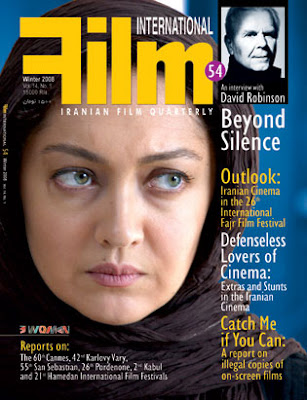This blog is about fairness; about looking at objects from multiple perspectives. Stable transformation comes only slowly; and only if the environment is free of sporadic jitters of passion and anger that destabilize growth. I strongly believe that the path to peace crosses through the battle with self.
Friday, February 29, 2008
Thursday, February 28, 2008
Google Joins the colonizer's National Georgraphic Society in "geographical incorrectness".
By Persian Gulf Online
Persian Gulf Online sent the following note to Google, Inc. CEO Dr. Eric E. Schmidt. We encourage all friends of Iran send a similar friendly letter of complaint to Google.
25 February 2008
Dr. Eric E. Schmidt, CEO
Google Inc
1600 Amphitheatre Parkway
Mountain View, CA 94043
Dear Dr. Schmitt,
It has come to our attention that Google is including "Arabian Gulf" as a synonym or alternative term for the Persian Gulf on its Google Earth maps.
Please note that "Arabian Gulf" was once used as a reference to what is known today as the Red Sea [1] which renders its reintroduction as a variant for the Persian Gulf even more misleading. Historically, the accuracy of the term Persian Gulf is beyond dispute. Several legal documents from the United Nations as well as the United States Board of Geographic Names confirm its legitimacy, as do centuries of classical history, including a reference to the body of water by Greek geographer and astronomer Ptolemy as the Aquarius Persico. The Persian Gulf has been known and recognized as such for more than 2,500 years. Agreements have also been solidified by the signatures of all six bordering Arab countries on United Nations directives declaring the name of this body of water as the Persian Gulf.
Applications of false and divisive references made to the Persian Gulf were first observed approximately 50 years ago, and formed part of a pan-Arab strategy aimed at diminishing the status of non-Arab influences in the Middle East. Iran and Israel, being non-Arab states, were the obvious target of this practice within the movement, initially attributed to and adopted by former Egyptian President and strongman Gamal Abdel Nasser, later promulgated and employed by the deposed Iraqi dictator Saddam Hussein. Today, it is frequently used as a tool of destabilization by unsavory radicals and militants.
We do not presume that by alluding to the Persian Gulf with a secondary reference, your intentions mirror those of the aforementioned parties but remain concerned that your action will be misconstrued by your website visitors as political in nature as no legal or geographically technical grounds exist for the inclusion of such terminology.
Given the fact that Google Earth is designed as a learning tool, its accuracy is of the utmost importance. We reiterate and reaffirm our position that the term "Arabian Gulf" is not only incorrect due to its past usage as a synonym for the Red Sea, but that its use will be perceived as reflective of your alignment with revisionist elements intent upon using the renaming of the Persian Gulf as a divisive political tool.
It is for these reasons that we, along with thousands of others expressing their discontent via this online petition [2], ask that Google avoid making such political statements and protect its reputation as an unbiased source of information by promptly correcting this mistake.
Sincerely yours,
Persian Gulf Online Organization
[1] Arabia, Red Sea & Persian Gulf [G. Child], Bellin, c. 1752, Rare Maps & Books
[2] Petition Online: Immediate and unconditional deletion of "Arabian Gulf" from Google Earth
Saturday, February 23, 2008
A thousand years older than the great wall of China
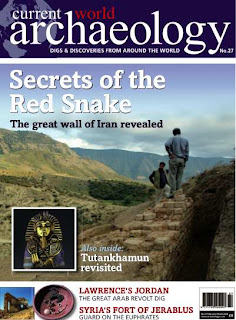
Science Daily (hyperlinks are mine)
The 'Great Wall of Gorgan'in north-eastern Iran, a barrier of awesome scale and sophistication, including over 30 military forts, an aqueduct, and water channels along its route, is being explored by an international team of archaeologists from Iran and the Universities of Edinburgh and Durham. This vast Wall-also known as the 'Red Snake'-is more than 1000 years older than the Great Wall of China, and longer than Hadrian's Wall and the Antonine Wall put together.
Until recently, nobody knew who had built the Wall. Theories ranged from Alexander the Great, in the 4th century BC, to the Persian king Khusrau I in the 6th century AD. Most scholars favoured a 2nd or 1st century BC construction. Scientific dating has now shown that the Wall was built in the 5th, or possibly, 6th century AD, by the Sasanian Persians. This Persian dynasty has created one of the most powerful empires in the ancient world, centred on Iran, and stretching from modern Iraq to southern Russia, Central Asia and Pakistan.
Modern survey techniques and satellite images have revealed that the forts were densely occupied with military style barrack blocks. Numerous finds discovered during the latest excavations indicate that the frontier bustled with life. Researchers estimate that some 30,000 soldiers could have been stationed at this Wall alone. It is thought that the 'Red Snake'was a defence system against the White Huns, who lived in Central Asia.
Eberhard Sauer, of the University of Edinburgh's School of History, Classics and Archaeology, said: “Our project challenges the traditional Euro-centric world view. At the time, when the Western Roman Empire was collapsing and even the Eastern Roman Empire was under great external pressure, the Sasanian Persian Empire mustered the manpower to build and garrison a monument of greater scale than anything comparable in the west. The Persians seem to match, or more than match, their late Roman rivals in army strength, organisational skills, engineering and water management.”
The research is published in the new edition of Current World Archaeology and the periodical Iran, Journal of the British Institute of Persian Studies 45.
Tuesday, February 19, 2008
Woman's right!
Grand Ayatollah Mazaheri, one of the more renowned religious scholars based in Isfahan, has issued a Fatwa allowing unwed mothers to obtain abortions.
Sunday, February 17, 2008
Mother Courage and her Children: Brecht in Iran
Mother Courage and Her Children was written in 1939 by the German dramatist and poet Bertolt Brecht (1898-1956); one of the founders of modern theater and an avid anti-nazi artist whose work reflected a strong resistance to the rise of Fascism . The play is set in the perior of the Thirty Years' War of 1618-1648. It follows the fortunes of Anna Fierling, nicknamed "Mother Courage", a woman with the Swedish Army who is determined to make her living from the war. Over the course of the play, she loses all three of her children, Swiss Cheese, Eilif, and Katrin, to the same war from which she sought to profit. (more at Wikipedia) This year, Iran's 26th annual Fajr Theater Festival hosted the world famous Berliner Ensemble and staged Mother Courage (In Persian: naneh delavar) directed by Clause Peymann.

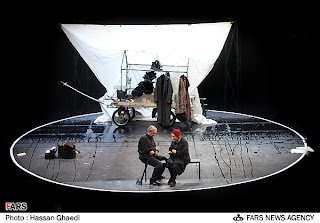
Saturday, February 16, 2008
Yerma: Lorca in Iran

Federico Garcia Lorca: The Spanish socialist Avant garde poet, slain by the nationalist particans of the Spanish War. I wonder how well Lorca is known in the North American literary circles, but given his "leftist" tendencies I won't be surprised if he is not.
In Iran, he is a well known poet; thanks to Shamlu who introduced his work through free translations. Lorca was one of the Spanish figures that influenced many a young men and women of the 70s. I am happy to know that Lorca is still read in Iran.

Recently (in the Fajr Theater Festival held in the period of commemoration of the revolution), one of Lorca's best plays, Yerma was on stage. Yerma is the story of a woman's passion, love, desire and sexuality as she struggle within social structures that take a toll on woman's dignity.
Thursday, February 14, 2008
Old promise: Kerman ( December 2007)
Kermani's elite are DECRYING the defacing of Kerman's historical urban spaces! However, Kerman has been ruled for centuries by a feudal elite, and in my opinion what is happening now is the revenge of the peasants.
Sunday, February 10, 2008
29 years after revolution: Cinema Stars
These women are popular, and the films they play are successful because they play the roles of women who challenge the status quo, who overcome the barriers of tradition, patriarchy, and misogyny characteristic of all the biblical religions: Islam, Christianity and Judaism! That Iran has a cinema industry, made successful by talking about women issues, and profitable because of beautiful and strong women who create an identity for the mothers and daughters of Iran's future, is highly remarkable!
Leila Hatami

Mahnaz Afshaar

Baran Kosari

Tarane Alidoosti

Merila Zare'i

Pegah Ahangarani

Hedyeh Tehrani

Mitra Hadjar

Roya NoNahali
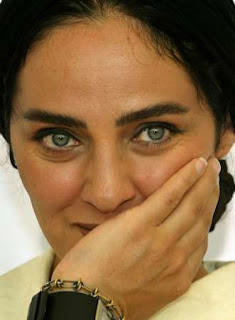
Golshifteh Farahani
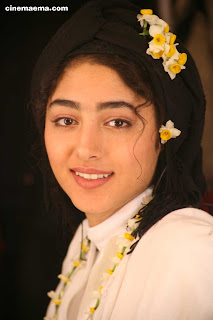
Niki Karimi
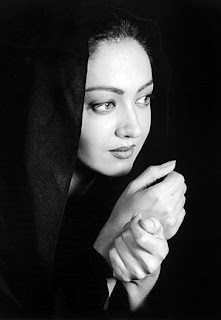
29 years after revolution: Dissent of Khomeini's Children
Many years ago, the Iranian parliament passed a law, that would subscribe HARSH punishment to anyone uttering insults at the grand ayatollah, Khomeini. Khomeini's shrine stands as magnificent as that of a saint! Khomeini's son's are dead, one was killed by Shah, the other by the Islamic republic--or so the rumors have it.
However, Khomeini grandchildren have turned into controversial figures--who perhaps survive under protection by his grandmother, who has threatened to spill the beans of many who are holding high offices today, should harm come to her dissident grandchildren!! But Khomeini's grandchildren are also a subsample of the post-revolutionary generation of now middle aged man and women, turned pragmatic and moderate!
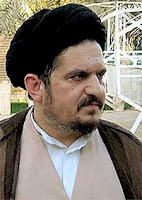
At some point, Hossein (picture) called for a US overthrow of the Islamic regime! He fled to Iraq and spoke against IRI, then went to the US and was embraced by neoconservatives, before he suddenly and safely returned to Iran.
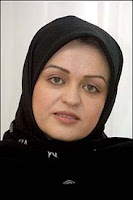 In 2004, Zahra Eshraghi (picture), Khomeini's grand daughter who is a feminist and human rights activist was declared unfit to run for parliament.
In 2004, Zahra Eshraghi (picture), Khomeini's grand daughter who is a feminist and human rights activist was declared unfit to run for parliament.In 2008, Ali Eshraghi (right picture), another one of Khomeini's grandchildren was barred from election. (Apparently because he shaves and smokes!)
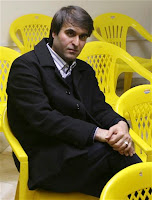
Hassan Khomeini (picture below, next to the chimp#2), who has joined hundreds of protesters in defense of freedom of speech, has been lashing out against the massive disqualification of the reformist candidate and warning against militarization of politics and politicization of military!!
Sean Penn met Hassan in Tehran :

As he approached, I was immediately taken with him. There was a striking twinkle in this man's eyes. He was younger than me by perhaps a decade. But looking in his smiling face, I wouldn't have put it past him that he might read my mind. He had a nearly ginger-colored beard, light skin and eyes, and the black turban of a Seyed. He greeted me first, then my companions, and asked us to sit. We were told that while he understands some English, he would prefer to speak in Farsi and be translated.
He had been told that I had gone to the Friday prayers, so he began the interview by asking my feelings about that. I told him that while the sea of belief in Islam had been impressive, that the use of seductive rage in the chants of "Death to America" and "Death to Israel" are taken quite literally by mothers and fathers in the United States. I said that it seemed to me a highly destructive and inaccurate representation of the country I had come to learn about. Hassan listened with kind interest. His eyes didn't leave me as the translator made clear my statement. He uttered a very brief sentence in Farsi. He said, "Then we should change it." I found myself very moved when he spoke about tolerance for other religions. He said, "The purpose of multiple religions is for each to complete the other," and that "therefore, they are not only to be tolerated, but embraced." This, from the closest living male descendant of the Ayatollah, who had declared a death fatwa upon writer Salman Rushdie. And I believed him. Yet he cautioned me upon further questioning about the definition of terrorism. "What is the yardstick" he asked, "that defines Iran as a terrorist-supporting nation, yet dismisses such a claim against Israel?" And I supposed that his question could be asked about the United States as well.
In 2006, Hossein stated:
"My grandfather's revolution has devoured its children and has strayed from its course. I lived through the revolution, and it called for freedom and democracy - but it persecuted its leaders. For example [Ayatollah Mahmoud] Taleqani, who was frequently imprisoned in the days of the Shah, and after the revolution was harshly persecuted by [the regime] for denouncing violations of the law. He consequently [had to] go into hiding, while grieving and protesting. He protested against the establishment of the revolutionary committees that ruled in an arbitrary and disorganized [manner], and against the persecution of his family...
"The revolution rocked the foundations of society, which had [previously] been conservative and had rejected freedom. The revolution prepared society to accept democracy and freedom. Thanks to the revolution, all sectors of [the Iranian] society, from the educated class to the peasants and the women, are now able to accept [the notion of] freedom and have become politically aware."
In an interview with New York Times, Zahra Eshraghi criticized the forced dress code in Iran:
"I'm sorry to say that the chador was forced on women," she said over tea and cakes in her upscale apartment decorated in ornate furniture in northern Tehran. "Forced, in government buildings, in the school my daughter attends. This garment that was traditional Iranian dress was turned into a symbol of revolution. People have lost their respect for it. I only wear it because of my family status."
Those are the words of a rebel. Ayatollah Khomeini called the chador the "the flag of the revolution," and early in the revolution of 1979 encouraged all women to wear it. Eventually, all women were forced to wear garments that cover their heads and hide the shape of their bodies.
Ms. Eshraghi's frankness is emblematic of the changes today in Iran, where the values and promises of the revolution have given way to an intense, even dangerous debate about whether religion has a place in politics and society.
As a member of the ayatollah's family, Ms. Eshraghi is expected to embrace the trappings of the revolution and the Islamic Republic that followed. Nothing symbolizes the revolution more than the ankle-length black chador that covers all but a woman's face.
But the attitude toward the chador in Iran today has become so negative that some merchants, particularly in northern Tehran, which is more secular, Westernized and wealthy than the rest of the city, refuse to serve "chadori," as chador-wearing women are called. Chadori who do not want to expose themselves to insults avoid the new food court in Tehran that serves tacos and pizza but no traditional Persian food.
"I was in a shop, and I wanted to buy a pair of pants, and the owner wouldn't sell them to me because I was in a chador," Ms. Eshraghi said. "We have only ourselves to blame. People are not happy with the establishment, and the chador has become its symbol."
Pale-eyed, with perfectly manicured eyebrows and slightly frosted hair, Ms. Eshraghi said she had always covered her hair in public, at least with a scarf, because of the dictates of Islam. She fought colleagues at the Interior Ministry, where she promotes women's issues, when they tried to force her to wear more modest dress and dark colors underneath her chador. Behind closed doors, she wears fitted pantsuits that do not conceal her full figure.
"I told them it was not anybody's business what I wear under the chador," she said.
Saturday, February 9, 2008
What if Israel gives up its WMDs
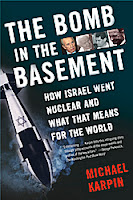 A Nuclear-Free Mirage
A Nuclear-Free MirageThe Middle East cannot be freed from weapons of mass destruction unless the US turns the spotlight on Israel
As Mohamed ElBaradei, head of the International Atomic Energy Agency, finalises his report on Iran’s nuclear programme, the Iranian foreign minister, Manouchehr Mottaki, has been promoting the “historic idea” of a Middle East free from weapons of mass destruction.This overlaps with a goal adopted by the UN security council back in 1991 when resolution 687 talked about “the establishment of a nuclear-weapons-free zone in the region of the Middle East”.
The resolution, approved after the expulsion of Iraqi troops from Kuwait, had eight paragraphs dealing with Iraq’s programmes in biological, chemical, and nuclear arms, and made clear that sanctions were to be lifted if, and only if, the International Atomic Energy Agency (IAEA) and other UN inspectors had given Iraq a clean bill of health regarding its WMD activities.
Paragraph 14 notes “that the actions under paragraphs 8-13 of this resolution represent steps towards the goal of establishing in the Middle East a zone free from weapons of mass destruction and all missiles for their delivery and the objective of a global ban on chemical weapons”.
However, there is a subtle but important difference between a WMD-free Middle East and the establishment of a WMD-free zone “in” the Middle East as set out in resolution 687. The resolution does not attempt to define the zone (at least, not beyond Iraq) and the word “in” suggests such a zone might not apply to the whole of the Middle East.
Presumably this omission was not accidental, though the idea of a WMD-free zone covering only parts of the region makes no sense. The objective of a Middle East free of WMDs can be achieved only if Israel is also declared free of them by IAEA and other UN inspectors.
In defiance of the security council resolution 487 of June 1981, Israel has not placed its nuclear facilities, whether civilian or military, under IAEA safeguards.
Indeed, while it is an open secret that Israel’s nuclear facility at Dimona started producing atom bombs in 1968, and that it has built up an arsenal of some 200 nuclear bombs, it has not officially acknowledged the existence of such activity.
Moreover, Israel has ongoing biological and chemical weapons programmes. The Israeli Institute for Biological Research (IIRB) at Ness Ziona, south of Tel Aviv, established in 1952, is the Israeli military and intelligence community’s front organisation for developing, testing and producing biological and chemical weapons. Access to Nes Ziona is denied even to the members of the Israeli parliament’s foreign affairs and defence committees concerned about the health risks to the residents of the area.
The US Office of Technology Assessment for Congress reported in 1993 that Israel had “undeclared offensive chemical warfare capabilities” and was ‘generally reported as having an undeclared offensive biological weapons programme.’ In that year the Israeli government acknowledged that Marcus Klinberg, deputy head of the IIRB, was given 20 years sentence in solitary confinement in 1983 for leaking information on Israel’s biological weapons programme to the Soviet Union. In 1998, despite the protest by Nes Ziona’s residents, the government extended the IIRB site by a further 41 acres.
Unless Washington takes a lead on turning the spotlight on Israel’s WMD, the idea of the WMD-free Middle East will remain empty rhetoric.
Consider this scholarly research about Zionist's intentions and actions towards wiping Arabs off the map to realize the imperative for pushing Israel to disarm!
also see: Israel's sacred Terrorism
and Israel's deadly poison
Wednesday, February 6, 2008
Tuesday, February 5, 2008
Western Hypocrisy: episode # N.
In January 2008, Israel launches TecSAR, a new spying sattelite on Iran.
Yesterday (Feb 4 2008) Iran inaugurates the Iranian space center, and launches a research rocket into space.
Then American press goes bizzerk:
Iran's Satellite Program Is `Troubling Development,' US Says
Bloomberg -11 hours ago Iran rocket test 'unfortunate': White House
AFP -15 hours ago White House calls Iran rocket launch "unfortunate"
Reuters -23 hours ago
Sunday, February 3, 2008
Borghani, friend of journalists, dies.
Tehran Times made a conservative announcement:
Former MP Ahmad Borghani dies of heart attack
Tehran Times Political Desk
TEHRAN, Feb. 02 (MNA) - Former lawmaker Ahmad Borghani died of heart stroke on Saturday night.
Borghani had served as the deputy culture minister for press affairs at the administration of President Mohammad Khatami. He was also the correspondent of the Islamic Republic News Agency (IRNA) in New York.
In Iran, any position in the ministry of culture is synonymous with censorship. Borghani, however, was prosecuted for NOT CENSORING. He fought for Newspapers such as Jame'eh, and Toos. Had he been in office today, Zanan (Women) magazine would not have lost license.
Ten years ago, in an interview with NYT:
In an interview today as the results were being announced, Ahmad Borghani, a close aide and spokesman for the President-elect, said Mr. Khatami would ''try to make changes as best he can.''
He said one of the first priorities would be legalizing political parties, which have been effectively outlawed since the revolution.
''Of course Mr. Khatami will not continue the present restrictions on the press and media,'' Mr. Borghani said. ''He will have an open policy toward them.''
Mr. Borghani also suggested that the new Government would seek to curb the police and religious militia whose members patrol streets and neighborhoods in search of people who are having parties, listening to forbidden music, watching imported videos or satellite television, playing cards or otherwise violating the social code.
''We have heard Mr. Khatami say that people should not investigate other people's private lives,'' Mr. Borghani said. ''If people want to listen to music, they should turn it down so it does not disturb their neighbors. Otherwise it is fine.''
In a document last week outlining his principles, Mr. Khatami said he was dedicated to ''countering superstition and fanaticism'' and ''assuring civil rights and freedoms of citizens.'' He pledged to curb censorship, to recognize the ''variety and diversity of attitudes'' and to combat the view ''that politics should be monopolized by a specific group.''
It is these people that the White House did not shake hands with. It is these people that the White House disfavored, because CLOWNS like Ahmadinejad serve the neoconservative interests best.

What's behind the US Ambassador's dissent?
- The White house is embarrassed as The U.S. ambassador to the U.N., Zalmay Khalilzad, violated Washington's long-standing policy on contact with officials from the Islamic government of Iran by showing up on a stage in Switzerland with the Iranian foreign minister. (here's a Huffington Post take on the event.)
- Khalilzad comes out and says outright: Iran's regional power is strengthened by US invasion of Iraq and Afghanistan.
This in my opinion is a clear signaling that Khalilzad is breaking away from his old masters, and is nodding at the new president, betting his money on Obama, and positioning himself to stick to power and take a central position in whatever foreign policy America will exercise towards Iran.
Is it because Khalilzad is a wise, peace loving dude?!
I'd say NO!
Is Khalilzad a peacemaker, or a career opportunist?
I remember reading about Khailizad in the New Yorker's Profile: "American Viceroy".
In many ways, Khalilzad seems the ideal envoy for Iraq. He was born in Afghanistan, was educated in Beirut and America, and is a moderate Muslim with long experience in American foreign-policy circles. Since September 11, 2001, he has been at the center of the Administration’s war on terror. When the U.S. invaded Afghanistan, Khalilzad was a special assistant to the President on the Middle East and Western Asia, reporting to the then nationalsecurity adviser, Condoleezza Rice. He worked closely with the Northern Alliance and other opponents of the Taliban regime. After Kabul fell, he helped to put together the transitional government of Hamid Karzai. In late 2002, with the Iraq war in the planning stages, President Bush named him Ambassador at Large for Free Iraqis.
Khalilzad was a hawk; he was close to neoconservatives like Richard Perle and former Deputy Secretary of Defense Paul Wolfowitz, and had argued for regime change in Iraq for more than a decade. He arrived in Baghdad a few days after the first American troops, alongside General Jay Garner, who was sent to supervise the reconstruction of Iraq. But a few weeks later Khalilzad and Garner were suddenly recalled to Washington, apparently at the behest of the Pentagon, and were replaced by Paul Bremer, who became the head of the new Coalition Provisional Authority. Bremer, in almost every major aspect, proved to be ineffectual. His peremptory dissolution of the Iraqi Army, in May of 2003, gave the insurgency vigor and a vastly expanded constituency.
In late 2003, Khalilzad was sent to Afghanistan as the U.S. Ambassador. The political capital he has in the Administration—which is considerable—is due to his successes there. While he was in Kabul, Afghanistan held its first free elections in history, which Karzai won handily. Karzai regarded Khalilzad as his close friend and adviser; he was very unhappy when, last April, President Bush nominated Khalilzad to replace Bremer’s successor in Baghdad, John Negroponte. Karzai appealed to President Bush several times to reconsider his decision.
Bush moved Khalilzad anyway. American forces had lost control of security in Iraq. There were more than a hundred car bombings in April alone, and the death toll for American soldiers had passed seventeen hundred. (As of last week, it had risen to over twenty-one hundred.) In October, the Pentagon published its first statistics for Iraq’s war dead; it estimated that nearly twenty-six thousand Iraqis had been killed by insurgents between January, 2004, and September, 2005. The figure did not include Iraqis killed by Americans.
When Khalilzad was offered the Ambassador’s job, he called Zbigniew Brzezinski, Jimmy Carter’s national-security adviser, who was Khalilzad’s mentor when they were both on the faculty at Columbia, in the early eighties. “I told him he should be in charge of policy and not just the execution of policy,” Brzezinski said recently. “He brings a lot more to bear than his predecessors, who knew nothing about Iraq. I wonder how many of our top decision-makers knew, a few years ago, the difference between a Sunni and a Shia. It was a gutsy decision to put himself in the line of fire. He is a broad-minded pragmatist and an insightful strategist. He has a unique advantage in a part of the world in which the United States has become massively engaged and does not have many people at the top equipped to deal with it. The top decision-makers today are ignorant and Manichaean.”
Where is Khalilzad coming from?
In 1975, Khalilzad went to the University of Chicago to pursue a doctorate in political science. “Zal was very much a child of the seventies, in jeans, a dishevelled haircut,” Augustus Richard Norton, one of his fellow-students and now a professor of international relations at Boston University, recalled. “He looked very much the part of a West Beirut radical in those days.”
At Chicago, Khalilzad became a student of Albert Wohlstetter, an expert in military strategy. Wohlstetter’s argument that the U.S. should achieve global supremacy through strategic nuclear weaponry had a powerful effect on the thinking of the nascent movement of American neoconservatives. Khalilzad recalled that he had sat in on a lecture in which Wohlstetter spoke about the “inevitability of war.” Khalilzad raised his hand and asked about “the inevitability of permanent peace.” This got Wohlstetter’s attention. He asked to see Khalilzad after class, and invited him to join a seminar he taught.
Wohlstetter held his seminars at his Chicago apartment, to which he invited people like Wolfowitz, who had been his student, to speak to the group. “Zal thrived in this environment,” Norton said. Wohlstetter had cultivated a network of like-minded thinkers, both at Chicago and at RAND, where he worked for many years, and several had gone on to jobs in government. (Wohlstetter introduced Perle to Chalabi.) According to Norton, Wohlstetter helped Khalilzad to make contacts in Washington early in his career. “Without the connections, Zal might have ended up as an obscure academic,” Norton said. “What Albert was able to do was to give him fast-track access to fairly Olympian heights of power, and that’s quite an advantage.”
How/When did he become a key player in Neoconservative ploy? In 80s, by aiding Mujahedin, and then leaving Afghanistan to Taliban!
The U.S. had been channelling aid to the mujahideen through the C.I.A. and the Pakistani intelligence service. Around the time Khalilzad arrived, in 1985, President Reagan signed a secret directive authorizing an increase in aid to the Afghans, but the Administration was divided over whether that should include sophisticated heat-seeking anti-aircraft Stinger missiles. Khalilzad argued strongly that it should. After months of debate, the mujahideen got the Stingers.Please, do read the entire article ...
“The Stingers sent a big message,” Khalilzad said. “It was an open secret that we were involved, but the intelligence channel gave us deniability. The Stingers removed that. American power and prestige had become engaged, we had crossed a threshold. But, at the same time, there was a lot of soul-searching as to whether or not this was going to make it harder for the Soviets to back down."
...
Khalilzad resists being labelled a neoconservative. (“To the best of my knowledge, I have not sat together with people and said, ‘Aha! Here is a doctrine, and this is what it means,’ ” he said.) As far as Iraq is concerned, however, he was in the neoconservative camp for years before the war. In 1998, Khalilzad signed an open letter to President Clinton that called for more robust action against Saddam. Other signatories included Rumsfeld, Wolfowitz, and Perle. Khalilzad told me that he had signed on because “when I left the government there was this sense that we had not done the right thing in Iraq. We had unfinished business.”
When Khalilzad has appeared in the press over the years, it has often been in connection with behind-the-scenes policymaking, and in certain quarters he is regarded as a Strangelovian figure, a dark eminence of American imperial power. One issue that has provoked controversy is his association with the energy company Unocal, which earned Khalilzad a cameo in Michael Moore’s “Fahrenheit 9/11.” In the mid-nineties, Unocal had tried unsuccessfully to secure a gas-pipeline deal from the Taliban government, which had seized power in Kabul in 1996 after years of civil war. Moore suggested that Republicans had first pandered to the Taliban, at the behest of their cohorts in the oil industry, and then turned against them when they didn’t make a deal.
Khalilzad worked as a paid consultant on the pipeline project, and during the negotiations he publicly expressed support for the Taliban. In 1996, in an editorial for the Washington Post, Khalilzad wrote, “The Taliban does not practice the anti-U.S. style of fundamentalism practiced by Iran—it is closer to the Saudi model. The group upholds a mix of traditional Pashtun values and an orthodox interpretation of Islam.” He also met with Taliban emissaries on a trip to Houston.
I do have a thank to give Mr. Khalilizad, politically speaking: he is the one to convince neocons to focus on Saddam, instead of Iran!
Friday, February 1, 2008
My Unrelenting Heros

Bahram Baizai.
Filmmaker, Playwrite, theater director, disliked by the government, his films break box-office records, if they get a permit to screen, they do not get a permit! Baizai doesn't compromise his films, he refuses to cut them to fit the guidelines. Baizai is in many ways Iran's Kubrick.
His art focuses on two themes:
1) Reconstruction and recreation of Iran's history, myth, folklore, ancient epics.
2) Persian Woman; her tragic drama, her triumphant victory, her transcendence above the petty traditions imposed by none other than male insecurities.
Baizai is the founder of modern theater in Iran. He uses the language in its most elegant and attractive form. His prose proxy poetry. His prose arise from the wealth of Persia's history.
Despite all restrictions, despite being disfavored by the funding agencies, despite being kept in dark and away from the spotlight, Baizai "remains" an icon of Iran's cultural progress. If they don't let him make films, he stages plays. If they deny him theater, he writes plays. He is unstoppable.In his "New Anthology of The Book of Kings"--considered an icon of Persian renaissance after the Arab Invasion--, Baizai wrote on Ferdowsi's behalf:
"Beat me, your stones and flogs are nothing to me
I have not praised you, and I have not brought your fathers out of obscurity
I did not lift your lowest stature to sky
I called you wordless
And I didn't make yours the language of thought
I did not dust your lost face
I did not recapture your lost empire with the magic of my words
Beat me, because your blade is more pleasant than the damnation of the nation for whom I aged."
 Iranian poet Simin Behbahani uses strictly traditional forms to express progressive ideas. |
| Photo Credit: Photo By Razieh Raaz Khalil |
A Poet Who 'Never Sold Her Pen or Soul'
Saturday, June 10, 2006; Page A16
Simin Behbahani
To stay alive, you must slay silence . . .
o pay homage to being, you must sing .
At 79, the revered poet has only peripheral vision, but she still writes. To defy the ravages of macular degeneration, she records her verses vertically, down the edge of the paper.
She described an incident in March when riot police approached her during a gathering in Tehran to mark International Women's Day. "Hey, don't hurt this lady. She is Simin Behbahani," a student in the crowd protested. "If you touch her, I will set myself on fire."
His outburst enraged the police. One of the officers lashed Behbahani's right arm and back with a whip and then beat her with a club that emitted electric shocks, she recalled. A passing policeman recognized her, intervened and bundled her into a taxi.
Sitting composedly in the solarium of her niece's home in McLean recently, Behbahani discussed her work and life through an interpreter. She was on her 15th tour of the United States, with speaking events in Washington, New York, Los Angeles and other cities, and will travel on to Canada.
"I have always been drawn to social issues. Even before the eruption of the revolution, while under the shah, I was also suffering," she said, referring to Shah Mohammad Reza Pahlavi, who was overthrown in the Islamic revolution of 1979. "There was no democracy in Iran. Even then, we had censorship."
Before the revolution, her poetry dealt with poverty, orphans and corruption, reflecting her concern for the outcast, the marginalized and the neglected. Her recent work has touched on the themes of freedom of expression and the rights of minorities and prisoners.
"I will identify her as the most iconic Iranian poet alive," said Farzaneh M. Milani , director of Studies in Women and Gender at the University of Virginia. "I can really say she has become a cultural hero, and she is treated as such outside and inside her country." Milani, an authority on Behbahani, teaches a course on Iranian female poets.
"She reminds me of T.S. Eliot," Milani said. "She dives deep into her culture and literature, and the product is a truly modern outlook on the role of the individual, concern for democracy and human rights. The form is traditional, but the perspective and poetic persona are quite progressive."
Behbahani is known for her ghazals , sonnet-like love poems distinguishable by their special rhyme scheme and lilting lyrics. Traditionally, the ghazal featured a male poet romancing a woman. Behbahani reversed the roles; in her poems, men are the objects of desire.
Source Washington Post
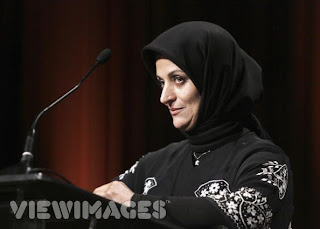
Shahla Sherkat :
(Born 1956 is a prominent Iranian feminist author, journalist and one of the pioneers of Iranian women's movement.
Shahla Sherkat is founder and publisher of Zanan (Women) magazine, which focuses on the concerns of Iranian women and continually tests the political waters with its edgy coverage of everything from reform politics to domestic abuse to sex. Zanan has been the most important Iranian women's journal after Iranian revolution.
Sherkat has had to appear in court on several occasions when Zanan's content was considered to be pushing boundaries too far. In 2001 she was sentenced to four months in prison for attending a conference in Berlin at which the future of politics in Iran was discussed following the success of reformist candidates in a parliamentary election.
================================================

Shirin Ebadi
(Persian: شیرین عبادی - Širin Ebâdi; born 21 June 1947) is an Iranian lawyer and human rights activist and founder of Children's Rights Support Association in Iran. She won the Nobel Peace Prize in 2003 for her significant and pioneering efforts for democracy and human rights, especially women's and children's rights.
As a lawyer, she is known for taking up cases of liberal and dissident figures who have fallen foul of the judiciary, one of the bastions of hardline power in Iran. She has represented the family of Dariush Forouhar, a dissident intellectual and politician who was found stabbed to death at his home. His wife, Parvaneh Eskandari, was also killed at the same time. The couple were among several dissidents who died in a spate of grisly murders that terrorized Iran's intellectual community.
Ebadi also represented the family of Ezzat Ebrahimnezhad, the only officially accepted case of murder in the Iranian student protests of July 1999. In the process, in 2000 Ebadi was accused of distributing the videotaped confession of Amir Farshad Ebrahimi, a former member of one of the main pressure lobby forces, Ansar-e Hezbollah. Ebrahimi accused his former associates of attacking members of President Khatami's cabinet on orders of high-level conservative authorities. Ebadi and Rohami were sentenced to five years in jail and suspension of their law licenses for sending Ebrahimi's videotaped deposition to Islamic President Khatami and the head of the Islamic judiciary.
Ebadi has also defended various cases of child abuse cases and has also established two non-governmental organizations in Iran, the Society for Protecting the Rights of the ChildDefenders of Human Rights Center (DHRC). She also drafted the original text of a law against physical abuse of children, which was passed by the Iranian parliament in 2002. (SPRC) and the
Ebadi has defended a few cases dealing with bans of periodicals (including the cases of Habibollah Peyman, Abbas Marufi, and Faraj Sarkouhi).
She has also been the representative for the family of the murdered freelance photographer Zahra Kazemi, the Iranian activist and whistle blower Akbar Ganji, the Iranian American scholar Haleh Esfandiari, who was jailed in Tehran on charges of velvet-revolutioning, and also represented the arrested activists of the 1-million campaign!
In 2004 Shirin Ebadi filled a lawsuit against the U.S. Department of Treasury because of restrictions she faced over publishing her memoir in the United States. After a long legal battle, Shirin Ebadi won and was able to publish her memoir in the United States.[7]
Life goes on
By Syma Syah
The winners of the Third Kaveh Golestan Photojournalism Award were announced on Friday October 27 in
Amani has captured young couples sitting intimately at a park in








And so the story continues...

http://golestanaward.com/isna.htm
(source: Payvand.com)
